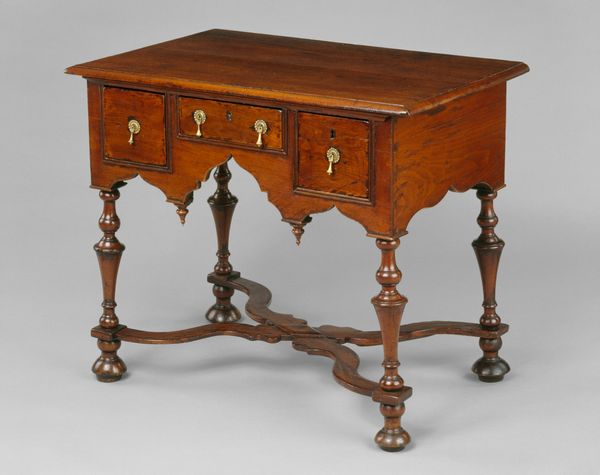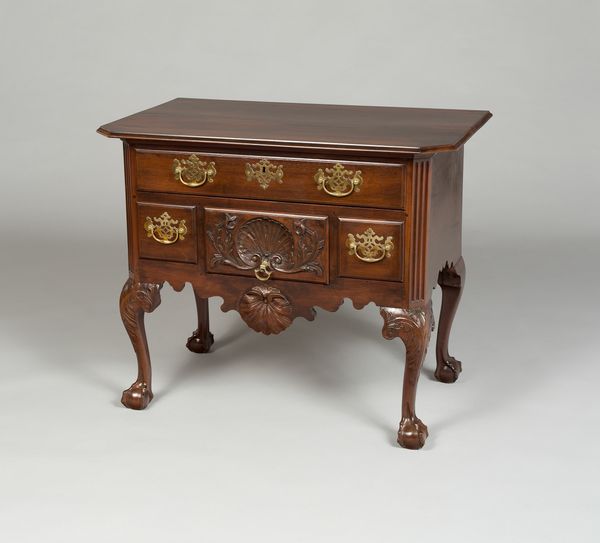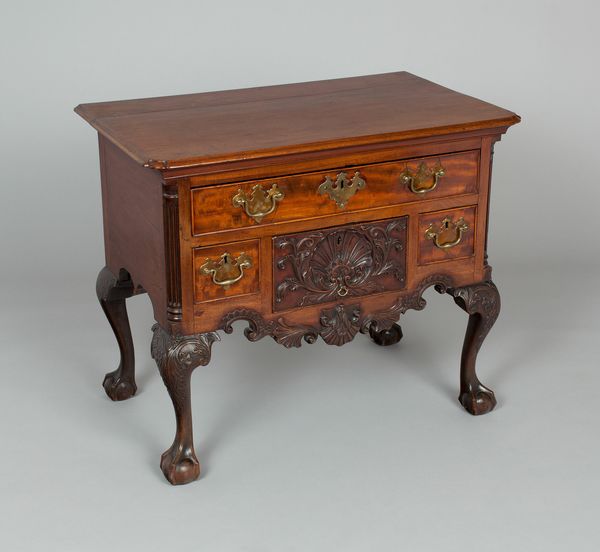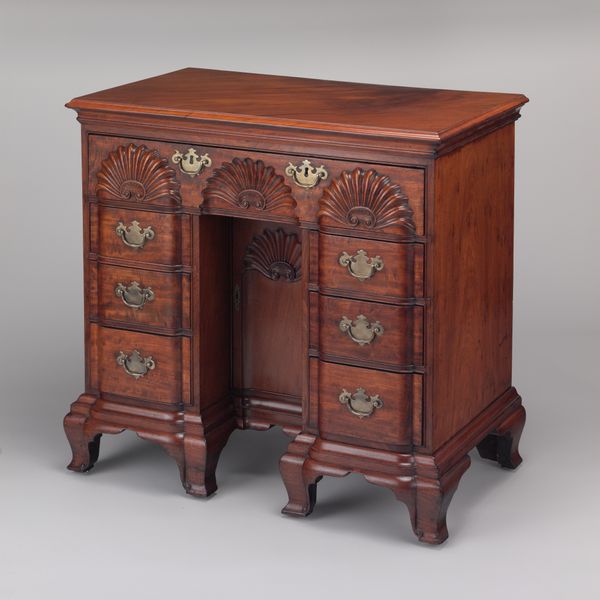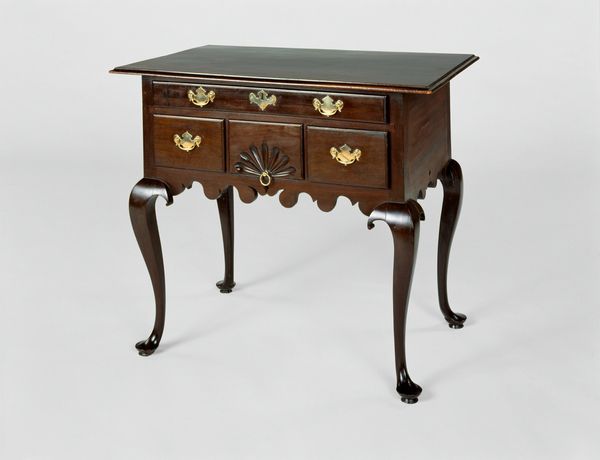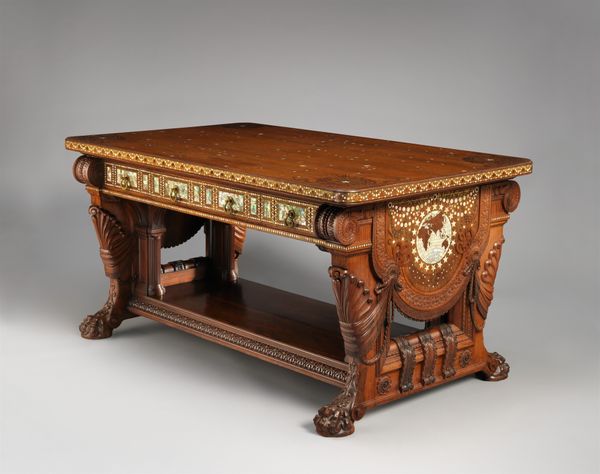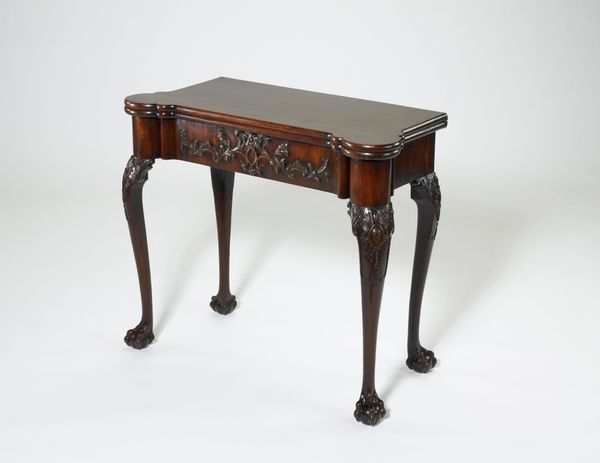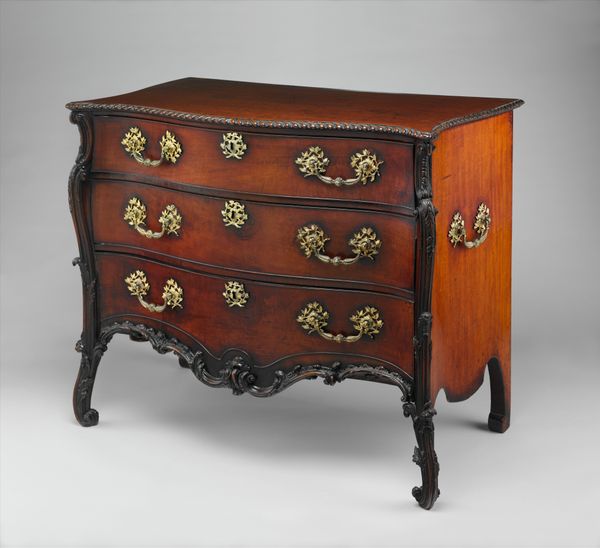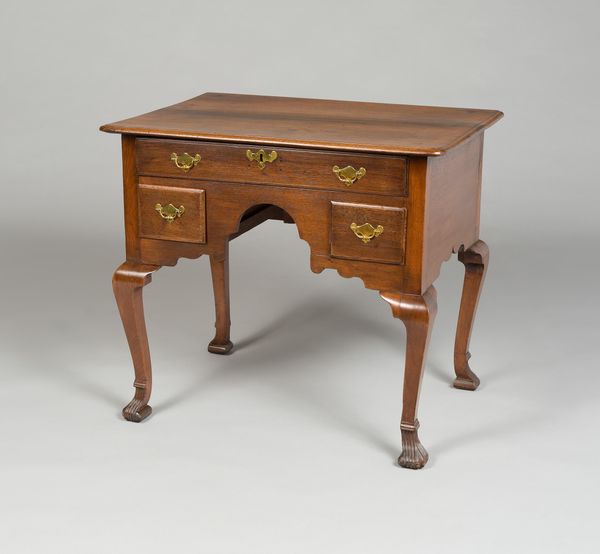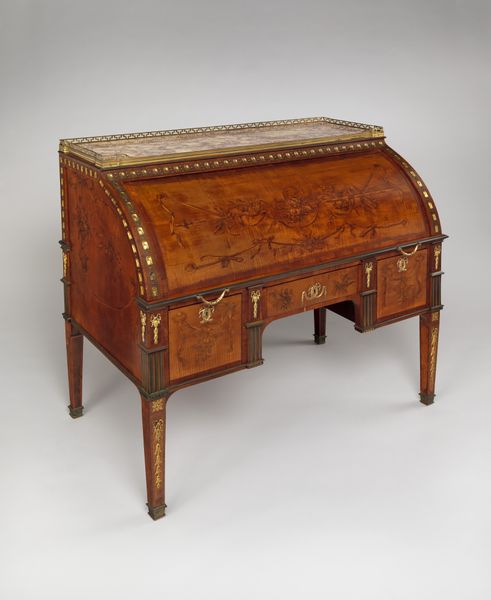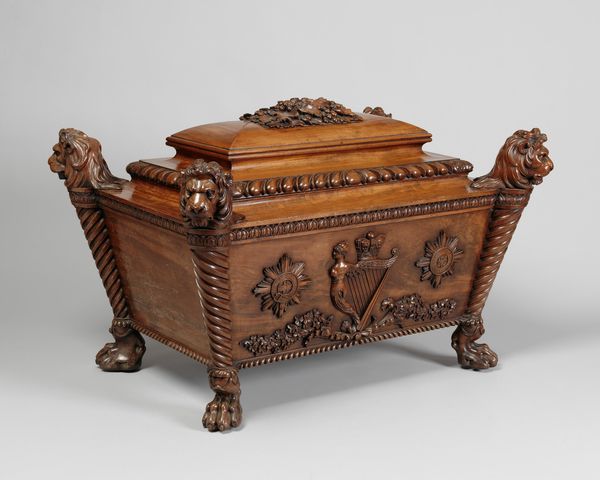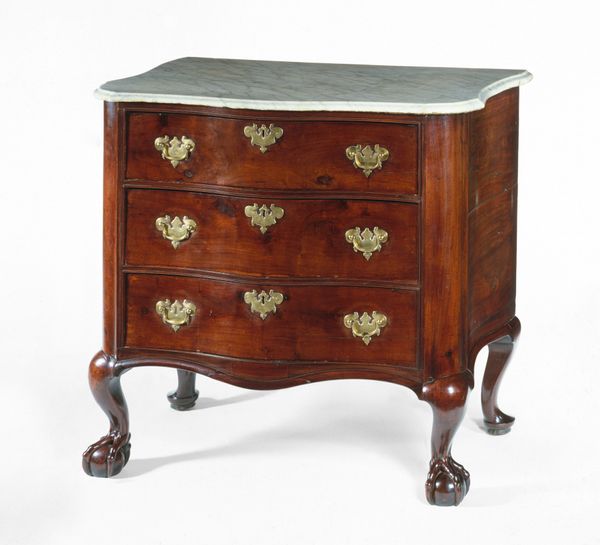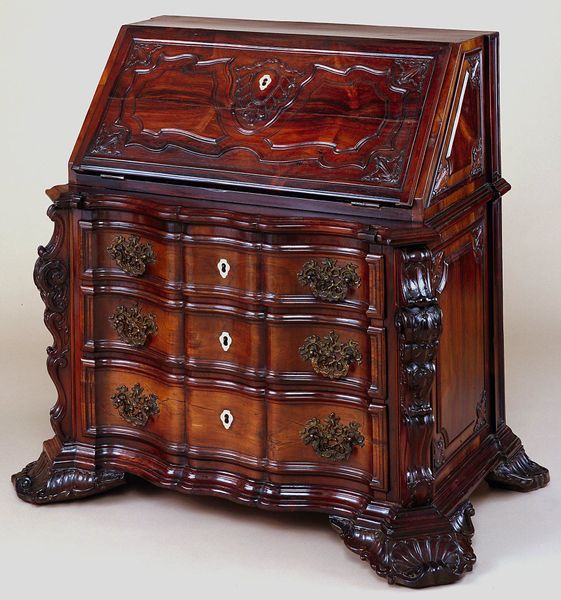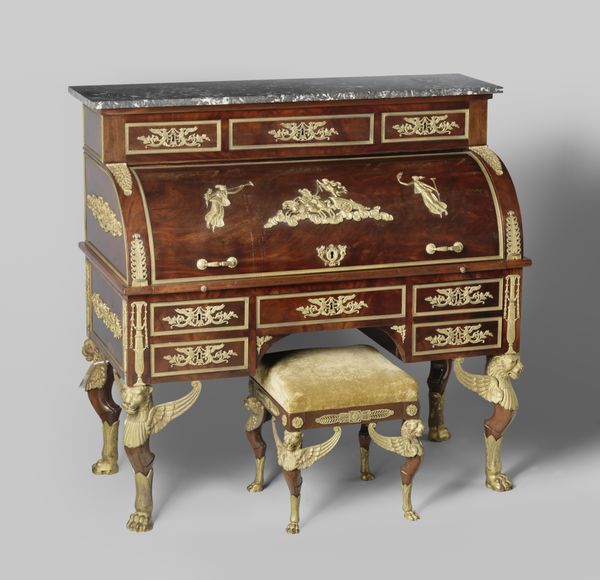
#
unusual home photography
#
natural stone pattern
#
product displayed
#
sculpture
#
furniture
#
sculptural image
#
unrealistic statue
#
stoneware
#
framed image
#
home decor
#
united-states
#
statue
Dimensions: 31 x 34 x 21 in. (78.74 x 86.36 x 53.34 cm)
Copyright: Public Domain
This dressing table was crafted from wood between 1750 and 1770 by The Garvan Carver, and is now housed at the Minneapolis Institute of Art. The design features a tripartite facade; three drawers are mounted above two smaller drawers that flank a sculpted shell panel. Note how the rectangular drawers provide the framework for the composition, while the central, rounded shell motif introduces an element of sculptural relief that activates the visual field. The carved legs, which terminate in ball-and-claw feet, emphasize the interplay between naturalistic form and structural design. The artist's strategic use of organic motifs serves as a symbolic language that would have been well understood in the 18th century. In this cultural context, the shell represents not only natural beauty but also evokes ideas of luxury and refinement. This dressing table embodies how a formal analysis can uncover layers of historical meaning and cultural values embedded within the artwork.
Comments
minneapolisinstituteofart almost 2 years ago
⋮
The elaborate scroll and leaf decoration on this 18th-century dressing table derives from the style of English designer Thomas Chippendale. The maker of this object became known as "The Garvan Carver" when a group of works in the Francis Garvan collection at Yale University were determined to be made by the same unidentified person. Scholars continue to investigate the Garvan Carver, who is believed to have worked in Philadelphia.
Join the conversation
Join millions of artists and users on Artera today and experience the ultimate creative platform.
